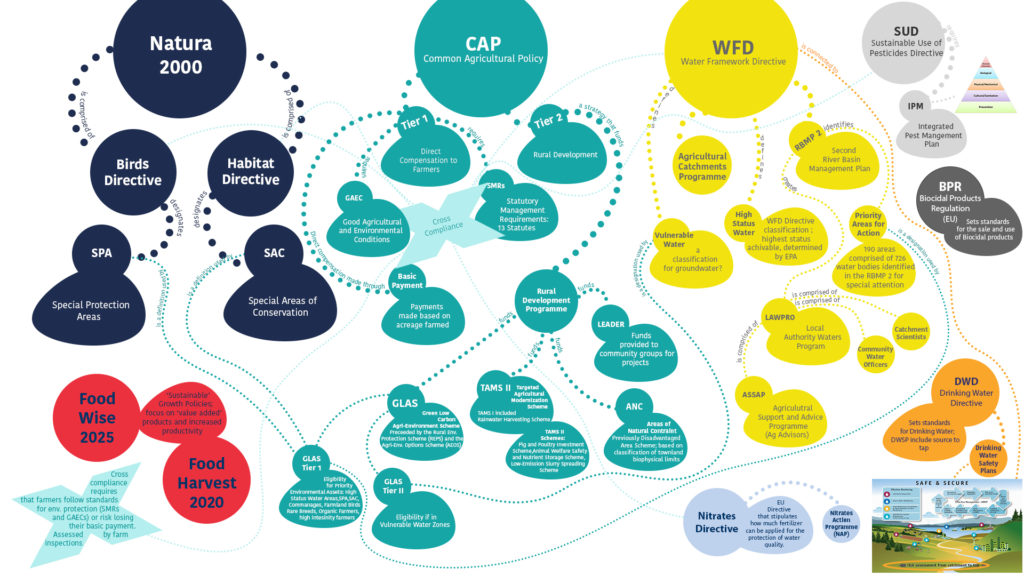Agriculture has been an important consideration for Group Water Schemes (GWSs) since their inception. Although some farmers were at first hesitant, many farmers donated land and assisted in the development and upkeep of GWSs in the 1960s an1970s. Agricultural pressures on water quality have grown in many areas as agriculture intensified following Ireland’s joining the EEC in the early 1970s. These pressures can negatively change the quality of GWSs’ source waters, impacting the kinds of treatment needed to ensure that water is safe to consume. There have been efforts, some lead by the NFGWS, to change agricultural practices to diminish these impacts. Thus, to understand the work that GWSs do, we also need to trace the policies and pressures that shape agricultural land-use.
Agricultural policy has had a dramatic impact on the Irish landscape and Irish economy. The history of agricultural policy is long, vast, and varied. We start our timeline in the late 1800s, although it spans centuries, rooted in the history of land tenure in Ireland. Our goal is to draw together relevant events and circumstances that resonate in Irish Agriculture as practised today. Current agricultural practices and policies are shaped by local, national, and international policies and are driven by international trade, geopolitics, and environmental policies. While this timeline is far from comprehensive, we’ve represented key happenings in this history, with an eye towards important changes in the dairy industry and the growing significance of agri-environmental schemes. These schemes provide farmers with payments, assistance, and other benefits for implementing environmental work.
Farmers are subject to a complex web of regulations that stipulate land-use practices, reporting requirements, and which can be the basis on which agricultural subsidies are given and taken away. These regulations are not just those stipulated by agricultural policies set by the EU and Ireland, but instead include policies impacting water quality, biodiversity, conservation, and hazardous chemicals, among others. In the image below, we have tried to show the relationship between the Common Agricultural Policy (CAP), the most significant agricultural policy in the EU, and other European and Irish policy and regulations. While larger consolidated farms are becoming more common, for those who still farm, many farm part-time, and farm payments make up an important part of their annual income.

